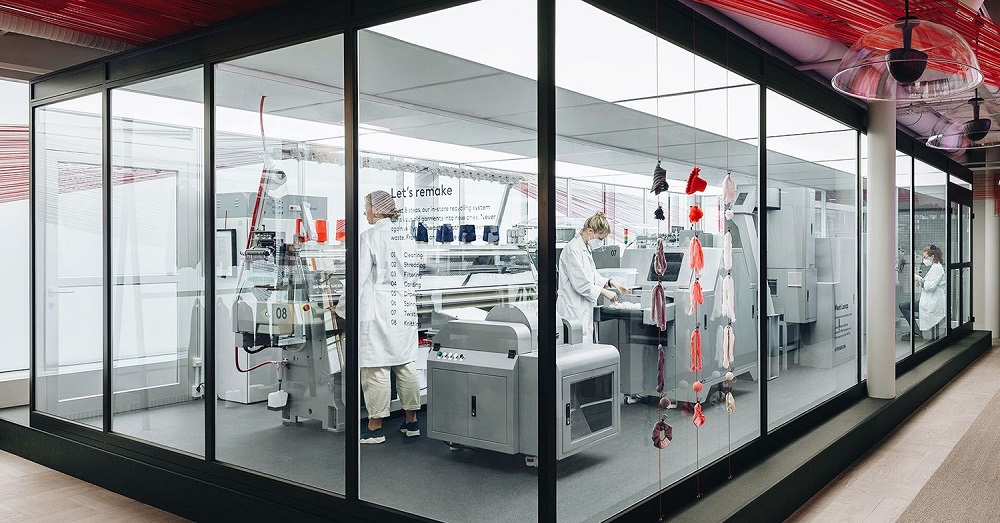An H&M store in Stockholm is piloting a clothing recycling program that spins old fibers into new garments.
Called Looop, the world’s first in-store clothing recycling system, the machine is a step toward circular fashion, a system in which materials are kept in use for as long as possible. It cleans, shreds, and knits old and unwanted clothing into new materials without using water or dye. According to H&M, Looop combines the fibers from the recycled clothing with “some sustainably sourced material” to strengthen the fabric. LIVEKINDLY has reached out to H&M to confirm the material and what percentage of it is used in clothing made by Looop.
“The launch of Looop isn’t just a glimpse of fashion’s future. It’s a reminder to treat all clothes as a resource,” says the company in a press release. “Nothing’s too tattered or torn to be recycled — and no clothes should ever end up in the trash. Recycling is also super-important for circular fashion to work. Unless people bring their old garments back into the system, there’d be no clothes to make new ones out of.”
https://www.instagram.com/p/CGSeY2rB47m/?utm_source=ig_web_copy_link
Fast Fashion’s Clothing Waste Problem
Fast fashion—cheaply made on-trend clothing—is a dominant force in the industry. According to The Ellen MacArthur Foundation, a UK charity that promotes a circular fashion economy, the equivalent of one garbage truck of textiles is burned every second. We lose an estimated $500 billion every year due to clothing that’s barely worn.
The fashion industry also has a huge environmental impact. Clothes release the equivalent of 50 billion plastic bottles worth of microfibers—tiny plastic particles—into the ocean each year. If fashion continues with business as usual, by 2050, the industry will use a quarter of the world’s carbon budget.
H&M is part of The Ellen MacArthur Foundation’s Make Fashion Circular Initiative, which centers on creating a fashion economy where apparel is used more, made to be recycled, and made using recycled and renewable materials. The fast-fashion giant, which has had a recycling program in place since 2013, faced controversy in 2018 over $4.3 billion worth of unsold stock, a testament to the sheer amount of clothing being produced. Much of that clothing was burned, but H&M released a statement saying that it burned only clothing that was mold-infested or contaminated with lead.
In addition to joining The Ellen MacArthur Foundation’s initiative, H&M has released collections featuring materials that may pave the way for a more sustainable fashion industry, including vegan leather made from byproducts of the winemaking process and silk made from citrus juice industry waste.
The Looop machine was developed by The Hong Kong Research Institute of Textiles and Apparel (HKRITA) with the non-profit H&M Foundation. It is only available at the Drottninggatan 56 location in Stockholm at the moment, but HKRITA aims to license the technology across fashion brands in order to spark greater change within the industry.


